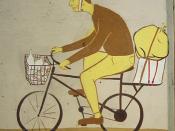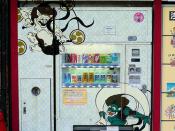Calligraphy - The Islamic Art
Before Mohamed Zakariya copies the words of the Koran, he washes his face, hands and feet as if he were going to pray. The pen he writes with is made from a reed that was buried in manure for four years to achieve the correct red colour. His ink is soot ground to powder, a process he describes as shoulder-busting labour. The paper is dyed with tea, coated with egg whites, which makes it easier to correct mistakes, then set aside to age for at least a year. Muslim calligraphers have worked this way since the 7th century.
The results can be beautiful but may seem caught in the past when viewed in "Letters in Gold: Ottoman Calligraphy from the Sakip Sabanci Collection, Istanbul" at the Los Angeles County Museum of Art through May 17. Zakariya, though, is among a growing number of American Muslims who are keeping Islamic calligraphy alive.
"It was the highest form of Islamic art," Linda Komaroff, LACMA associate curator of Islamic art, says of the Ottoman style. Works in the show date from the 15th to the 20th centuries. "The people who carry on the tradition now tend to love the act of writing. They may come to it from a devotion to the word and what it can express. And they need some familiarity with Arabic, the liturgical language of Islam."
For Muslims, Arabic is sacred. Jews hold Hebrew in the same esteem; Hindus revere Sanskrit. In many religions, the very act of writing is considered holy. While Muslims who hand-copy the Koran describe it as a spiritual occupation, Christians feel the same about the Bible, Jews about the Torah, Hindus about the Vedas, the four Hindu texts of devotional hymns. "Inside religious traditions, people believe the sacred word...


